Dingmin Wang
CRABS: A syntactic-semantic pincer strategy for bounding LLM interpretation of Python notebooks
Jul 15, 2025Abstract:Recognizing the information flows and operations comprising data science and machine learning Python notebooks is critical for evaluating, reusing, and adapting notebooks for new tasks. Investigating a notebook via re-execution often is impractical due to the challenges of resolving data and software dependencies. While Large Language Models (LLMs) pre-trained on large codebases have demonstrated effectiveness in understanding code without running it, we observe that they fail to understand some realistic notebooks due to hallucinations and long-context challenges. To address these issues, we propose a notebook understanding task yielding an information flow graph and corresponding cell execution dependency graph for a notebook, and demonstrate the effectiveness of a pincer strategy that uses limited syntactic analysis to assist full comprehension of the notebook using an LLM. Our Capture and Resolve Assisted Bounding Strategy (CRABS) employs shallow syntactic parsing and analysis of the abstract syntax tree (AST) to capture the correct interpretation of a notebook between lower and upper estimates of the inter-cell I/O sets, then uses an LLM to resolve remaining ambiguities via cell-by-cell zero-shot learning, thereby identifying the true data inputs and outputs of each cell. We evaluate and demonstrate the effectiveness of our approach using an annotated dataset of 50 representative, highly up-voted Kaggle notebooks that together represent 3454 actual cell inputs and outputs. The LLM correctly resolves 1397 of 1425 (98%) ambiguities left by analyzing the syntactic structure of these notebooks. Across 50 notebooks, CRABS achieves average F1 scores of 98% identifying cell-to-cell information flows and 99% identifying transitive cell execution dependencies.
C-3PO: Compact Plug-and-Play Proxy Optimization to Achieve Human-like Retrieval-Augmented Generation
Feb 10, 2025



Abstract:Retrieval-augmented generation (RAG) systems face a fundamental challenge in aligning independently developed retrievers and large language models (LLMs). Existing approaches typically involve modifying either component or introducing simple intermediate modules, resulting in practical limitations and sub-optimal performance. Inspired by human search behavior -- typically involving a back-and-forth process of proposing search queries and reviewing documents, we propose C-3PO, a proxy-centric framework that facilitates communication between retrievers and LLMs through a lightweight multi-agent system. Our framework implements three specialized agents that collaboratively optimize the entire RAG pipeline without altering the retriever and LLMs. These agents work together to assess the need for retrieval, generate effective queries, and select information suitable for the LLMs. To enable effective multi-agent coordination, we develop a tree-structured rollout approach for reward credit assignment in reinforcement learning. Extensive experiments in both in-domain and out-of-distribution scenarios demonstrate that C-3PO significantly enhances RAG performance while maintaining plug-and-play flexibility and superior generalization capabilities.
Goal-Driven Reasoning in DatalogMTL with Magic Sets
Dec 10, 2024

Abstract:DatalogMTL is a powerful rule-based language for temporal reasoning. Due to its high expressive power and flexible modeling capabilities, it is suitable for a wide range of applications, including tasks from industrial and financial sectors. However, due its high computational complexity, practical reasoning in DatalogMTL is highly challenging. To address this difficulty, we introduce a new reasoning method for DatalogMTL which exploits the magic sets technique -- a rewriting approach developed for (non-temporal) Datalog to simulate top-down evaluation with bottom-up reasoning. We implement this approach and evaluate it on several publicly available benchmarks, showing that the proposed approach significantly and consistently outperforms performance of the state-of-the-art reasoning techniques.
Contextual Distillation Model for Diversified Recommendation
Jun 13, 2024



Abstract:The diversity of recommendation is equally crucial as accuracy in improving user experience. Existing studies, e.g., Determinantal Point Process (DPP) and Maximal Marginal Relevance (MMR), employ a greedy paradigm to iteratively select items that optimize both accuracy and diversity. However, prior methods typically exhibit quadratic complexity, limiting their applications to the re-ranking stage and are not applicable to other recommendation stages with a larger pool of candidate items, such as the pre-ranking and ranking stages. In this paper, we propose Contextual Distillation Model (CDM), an efficient recommendation model that addresses diversification, suitable for the deployment in all stages of industrial recommendation pipelines. Specifically, CDM utilizes the candidate items in the same user request as context to enhance the diversification of the results. We propose a contrastive context encoder that employs attention mechanisms to model both positive and negative contexts. For the training of CDM, we compare each target item with its context embedding and utilize the knowledge distillation framework to learn the win probability of each target item under the MMR algorithm, where the teacher is derived from MMR outputs. During inference, ranking is performed through a linear combination of the recommendation and student model scores, ensuring both diversity and efficiency. We perform offline evaluations on two industrial datasets and conduct online A/B test of CDM on the short-video platform KuaiShou. The considerable enhancements observed in both recommendation quality and diversity, as shown by metrics, provide strong superiority for the effectiveness of CDM.
Calibrate and Boost Logical Expressiveness of GNN Over Multi-Relational and Temporal Graphs
Nov 03, 2023



Abstract:As a powerful framework for graph representation learning, Graph Neural Networks (GNNs) have garnered significant attention in recent years. However, to the best of our knowledge, there has been no formal analysis of the logical expressiveness of GNNs as Boolean node classifiers over multi-relational graphs, where each edge carries a specific relation type. In this paper, we investigate $\mathcal{FOC}_2$, a fragment of first-order logic with two variables and counting quantifiers. On the negative side, we demonstrate that the R$^2$-GNN architecture, which extends the local message passing GNN by incorporating global readout, fails to capture $\mathcal{FOC}_2$ classifiers in the general case. Nevertheless, on the positive side, we establish that R$^2$-GNNs models are equivalent to $\mathcal{FOC}_2$ classifiers under certain restricted yet reasonable scenarios. To address the limitations of R$^2$-GNNs regarding expressiveness, we propose a simple graph transformation technique, akin to a preprocessing step, which can be executed in linear time. This transformation enables R$^2$-GNNs to effectively capture any $\mathcal{FOC}_2$ classifiers when applied to the "transformed" input graph. Moreover, we extend our analysis of expressiveness and graph transformation to temporal graphs, exploring several temporal GNN architectures and providing an expressiveness hierarchy for them. To validate our findings, we implement R$^2$-GNNs and the graph transformation technique and conduct empirical tests in node classification tasks against various well-known GNN architectures that support multi-relational or temporal graphs. Our experimental results consistently demonstrate that R$^2$-GNN with the graph transformation outperforms the baseline methods on both synthetic and real-world datasets
Seminaive Materialisation in DatalogMTL
Aug 15, 2022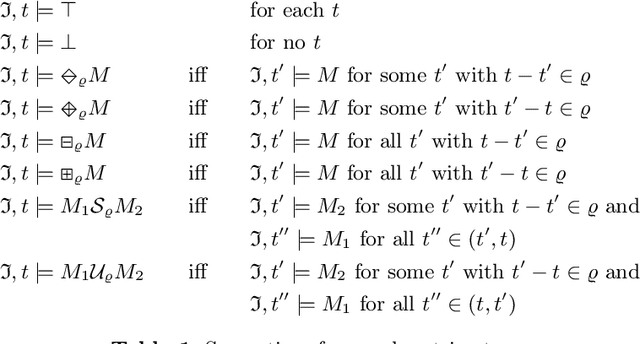
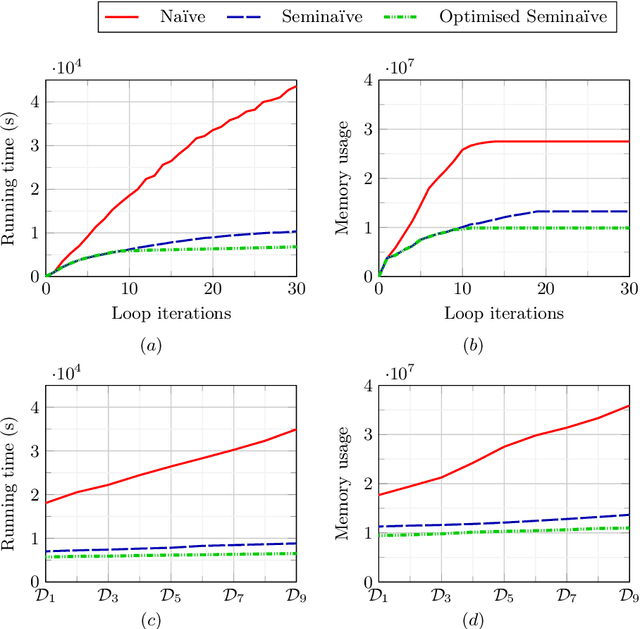
Abstract:DatalogMTL is an extension of Datalog with metric temporal operators that has found applications in temporal ontology-based data access and query answering, as well as in stream reasoning. Practical algorithms for DatalogMTL are reliant on materialisation-based reasoning, where temporal facts are derived in a forward chaining manner in successive rounds of rule applications. Current materialisation-based procedures are, however, based on a naive evaluation strategy, where the main source of inefficiency stems from redundant computations. In this paper, we propose a materialisation-based procedure which, analogously to the classical seminaive algorithm in Datalog, aims at minimising redundant computation by ensuring that each temporal rule instance is considered at most once during the execution of the algorithm. Our experiments show that our optimised seminaive strategy for DatalogMTL is able to significantly reduce materialisation times.
Augmenting Message Passing by Retrieving Similar Graphs
Jun 01, 2022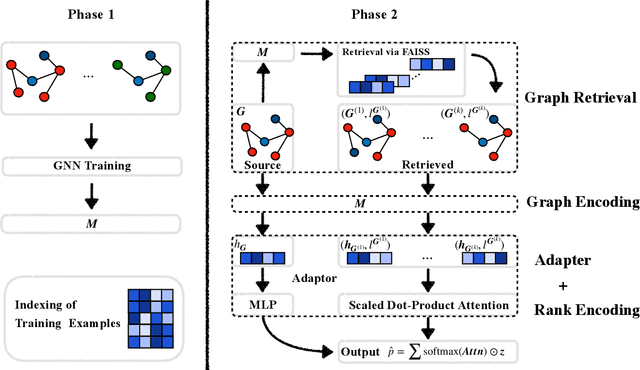
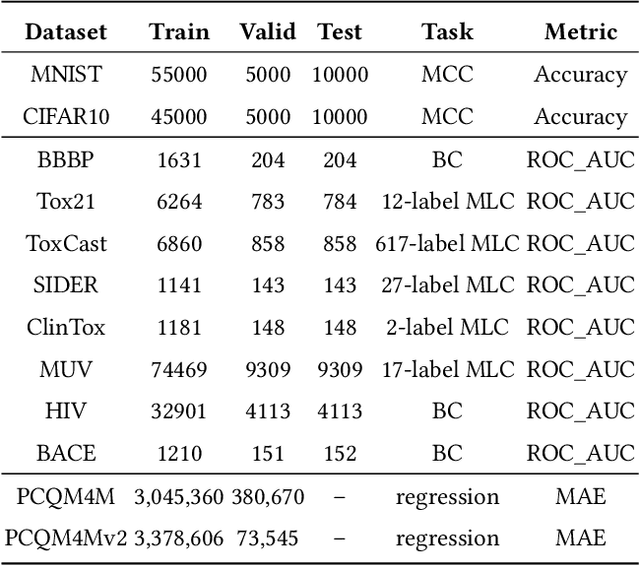
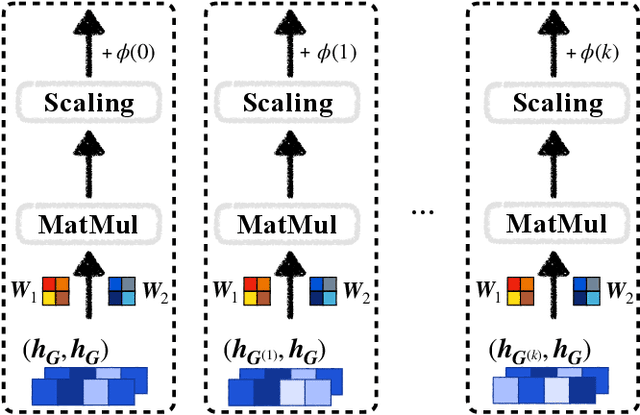

Abstract:Graph Neural Networks (GNNs) are effective tools for graph representation learning. Most GNNs rely on a recursive neighborhood aggregation scheme, named message passing. In this paper, motivated by the success of retrieval-based models, we propose a non-parametric scheme called GraphRetrieval, in which similar training graphs associated with their ground-truth labels are retrieved to be jointly utilized with the input graph representation to complete various graph-based predictive tasks. In particular, we take a well-trained model with its parameters fixed and then we add an adapter based on self-attention with only a few trainable parameters per task to explicitly learn the interaction between an input graph and its retrieved similar graphs. Our experiments on 12 different datasets involving different tasks (classification and regression) show that GraphRetrieval is able to achieve substantial improvements on all twelve datasets compared to three strong GNN baseline models. Our work demonstrates that GraphRetrieval is a promising augmentation for message passing.
MeTeoR: Practical Reasoning in Datalog with Metric Temporal Operators
Jan 12, 2022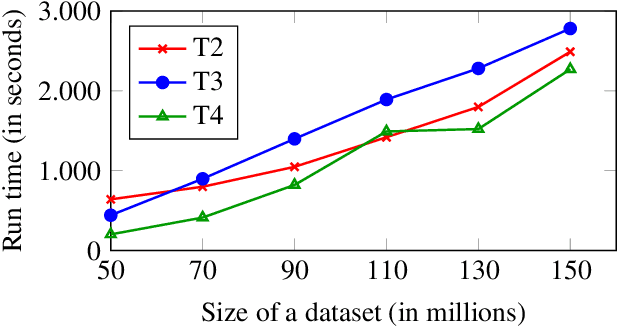

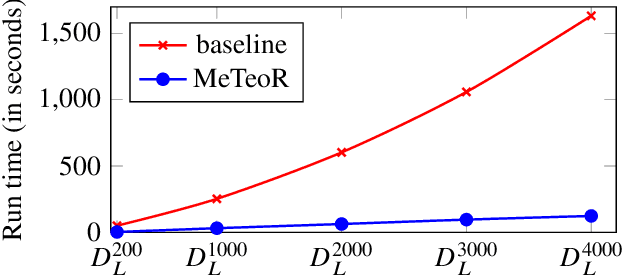
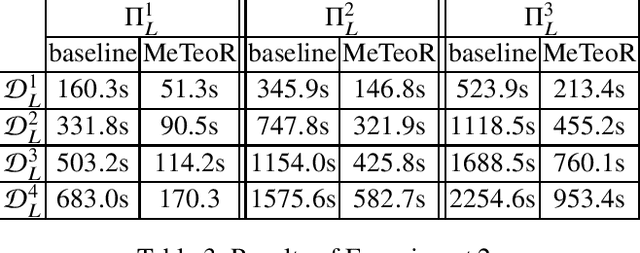
Abstract:DatalogMTL is an extension of Datalog with operators from metric temporal logic which has received significant attention in recent years. It is a highly expressive knowledge representation language that is well-suited for applications in temporal ontology-based query answering and stream processing. Reasoning in DatalogMTL is, however, of high computational complexity, making implementation challenging and hindering its adoption in applications. In this paper, we present a novel approach for practical reasoning in DatalogMTL which combines materialisation (a.k.a. forward chaining) with automata-based techniques. We have implemented this approach in a reasoner called MeTeoR and evaluated its performance using a temporal extension of the Lehigh University Benchmark and a benchmark based on real-world meteorological data. Our experiments show that MeTeoR is a scalable system which enables reasoning over complex temporal rules and datasets involving tens of millions of temporal facts.
A Template-guided Hybrid Pointer Network for Knowledge-basedTask-oriented Dialogue Systems
Jun 10, 2021
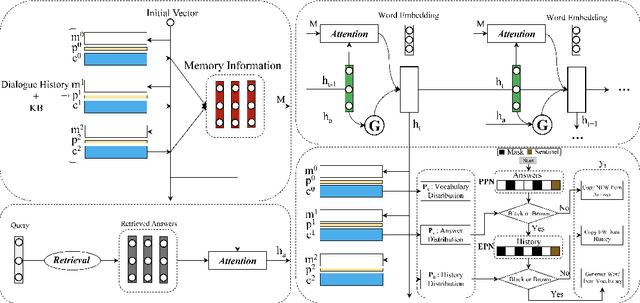

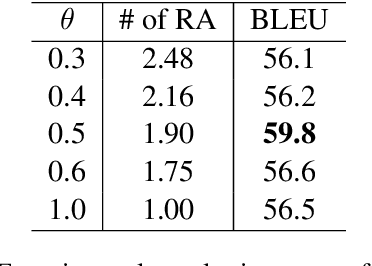
Abstract:Most existing neural network based task-oriented dialogue systems follow encoder-decoder paradigm, where the decoder purely depends on the source texts to generate a sequence of words, usually suffering from instability and poor readability. Inspired by the traditional template-based generation approaches, we propose a template-guided hybrid pointer network for the knowledge-based task-oriented dialogue system, which retrieves several potentially relevant answers from a pre-constructed domain-specific conversational repository as guidance answers, and incorporates the guidance answers into both the encoding and decoding processes. Specifically, we design a memory pointer network model with a gating mechanism to fully exploit the semantic correlation between the retrieved answers and the ground-truth response. We evaluate our model on four widely used task-oriented datasets, including one simulated and three manually created datasets. The experimental results demonstrate that the proposed model achieves significantly better performance than the state-of-the-art methods over different automatic evaluation metrics.
Dialogue State Tracking with Pretrained Encoder for Multi-domain Trask-oriented Dialogue Systems
Apr 22, 2020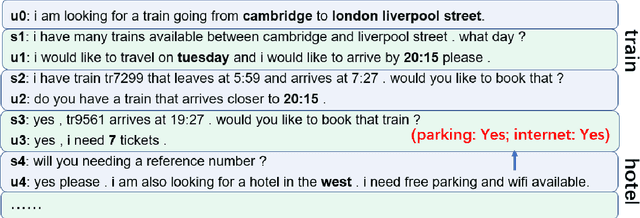
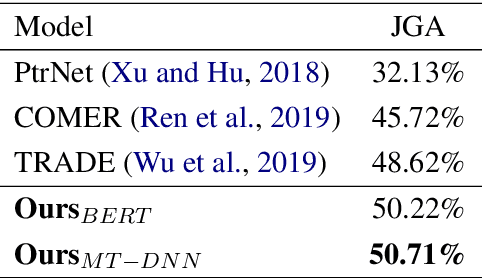
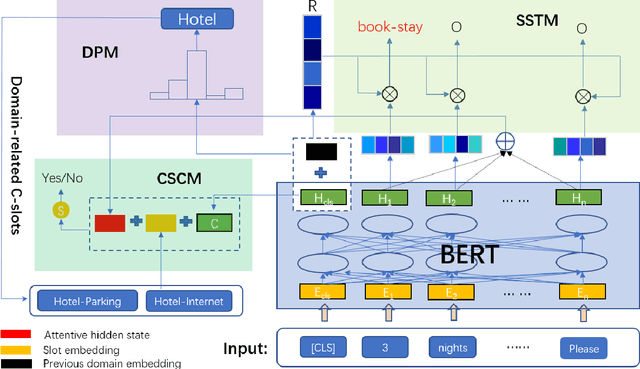
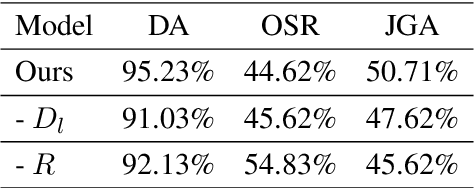
Abstract:In task-oriented dialogue systems, Dialogue State Tracking (DST) is a core component, responsible for tracking users' goals over the whole course of a conversation, which then are utilized for deciding the next action to take. Recently proposed approaches either treat DST as a classification task by scoring all enumerated slot value pairs, or adopt encoder-decoder models to generate states, which fall short in tracking unknown slot values or hold a high computational complexity. In this work, we present a novel architecture, which decomposes the DST task into three sub-tasks to jointly extract dialogue states. Furthermore, we enhance our model with a pretrained language model and introduce domain-guided information to avoid predicting slots not belonging to the current domain. Experimental results on a multi-turn multi-domain dataset (MultiWoz) demonstrate the effectiveness of our proposed model, which outperforms previously reported results.
 Add to Chrome
Add to Chrome Add to Firefox
Add to Firefox Add to Edge
Add to Edge